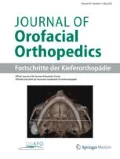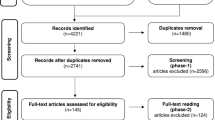Abstract
The findings in the literature concerning an association between general joint laxity (GJL) and temporomandibular disorders (TMDs) are inconsistent. Both differences in study designs and the lack of information about the precision of GJL measurements may be contributing to this inconsistency.
Aim:
The aim of this study was thus to investigate the reliability (the inter-rater and intra-rater test-retest reliability and internal consistency) of GJL measurements taken by dentists in a general dental practice setting.
Material and Methods:
A cohort of 50 patients ranging from 20 to 60 years in age (56% female) from a general dental practice was examined twice by two dentists addressing the GJL according to the Beighton Index. The second exam took place after 4 weeks. The inter-rater and intra-rater reliability of measurements was calculated using the intraclass correlation coefficient (ICC). Cronbach's alpha was used to assess the measurements' internal consistency.
Results:
Inter- and intra-rater reliability was found to be very good to excellent (ICC: 0.84–0.94). Cronbach's alpha (mean 0.75, range 0.66–79) yielded acceptable internal consistency measurements.
Conclusion:
The Beighton Index is a reliable instrument for dentists when assessing general joint laxity.
Zusammenfassung
Die Beziehung zwischen allgemeiner Gelenkhypermobilität und kraniomandibulären Dysfunktionen (CMD) wird bisher kontrovers beurteilt. Eine der Ursachen für die unterschiedlichen Bewertungen ist in den fehlenden Angaben zur Reliabilität von Messungen der Hypermobilität zu sehen.
Ziel:
Dieser Studie sollte sowohl die intra- und interindividuelle Reliabilität als auch die interne Konsistenz der Messungen zur Gelenküberbeweglichkeit durch Zahnärzte prüfen.
Material und Methodik:
Fünfzig Patienten im Alter zwischen 20 und 60 Jahren (56% weiblich) einer zahnärztlichen Praxis wurden zweimal im Abstand von 4 Wochen durch zwei Zahnärzte unter Anwendung der Beighton-Skala untersucht. Die intra- und interindividuelle Reabilität wurde mit Hilfe des Intraklassen-Korrelationskoeffizienten (ICC) geprüft. Die interne Konsistenz der Messungen wurde mit Cronbach's Alpha bestimmt.
Ergebnisse:
Die intra- und interindividuelle Reliabilität erwies sich als sehr gut bis ausgezeichnet (ICC: 0,84–0,94). Cronbach's Alpha (Mittelwert 0,75; Spannweite 0,66–0,79) zeigte eine akzeptable interne Konsistenz der Messungen.
Schlussfolgerung:
Die Beighton-Skala erlaubt eine zuverlässige Bestimmung der allgemeinen Gelenküberbeweglichkeit im zahnärztlichen Setting.
Similar content being viewed by others
Author information
Authors and Affiliations
Corresponding author
Rights and permissions
About this article
Cite this article
Hirsch, C., Hirsch, M., John, M.T. et al. Reliability of the Beighton Hypermobility Index to Determinate the General Joint Laxity Performed by Dentists. J Orofac Orthop 68, 342–352 (2007). https://doi.org/10.1007/s00056-007-0708-z
Received:
Accepted:
Issue Date:
DOI: https://doi.org/10.1007/s00056-007-0708-z




